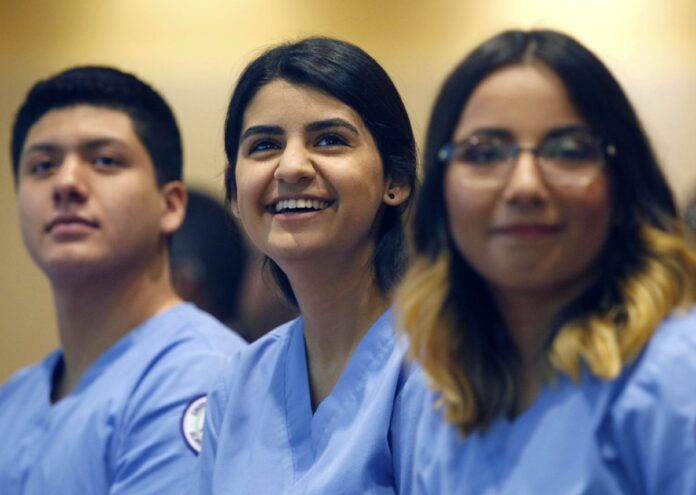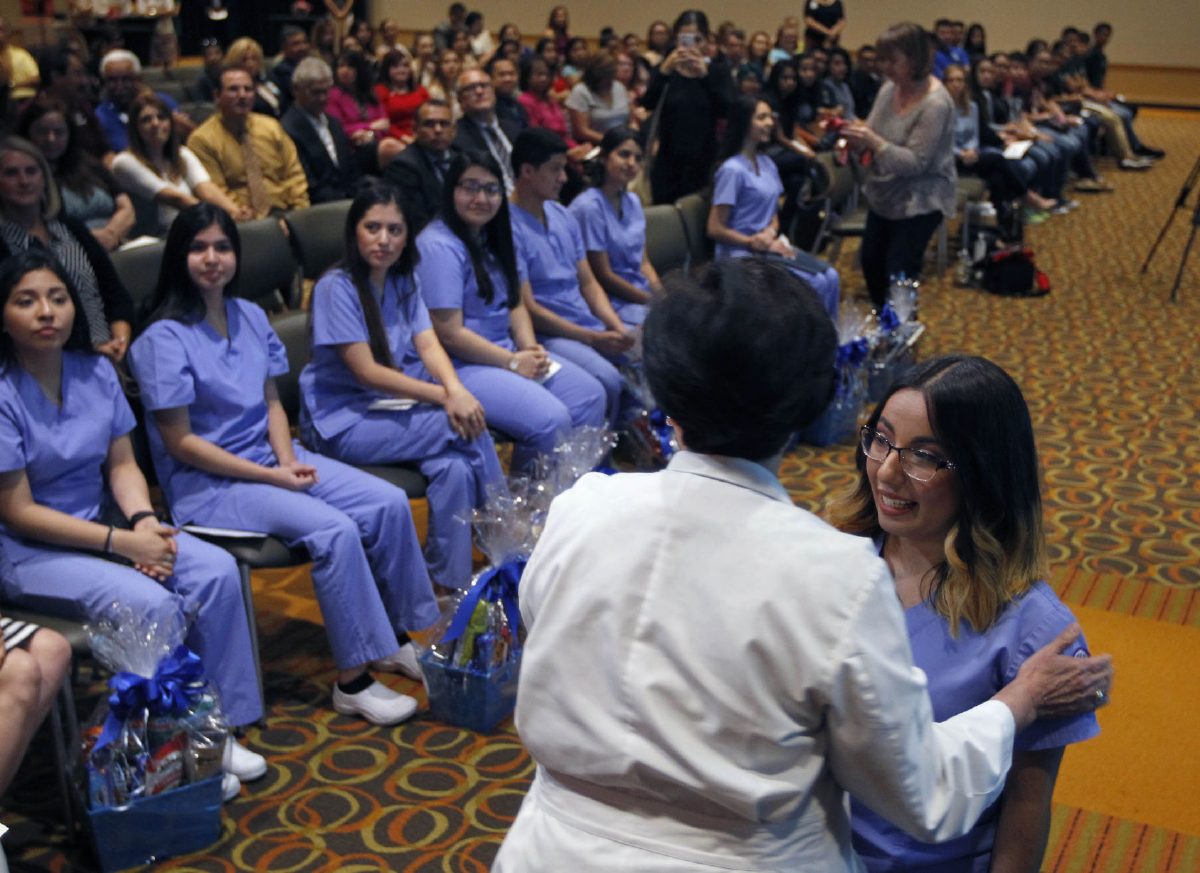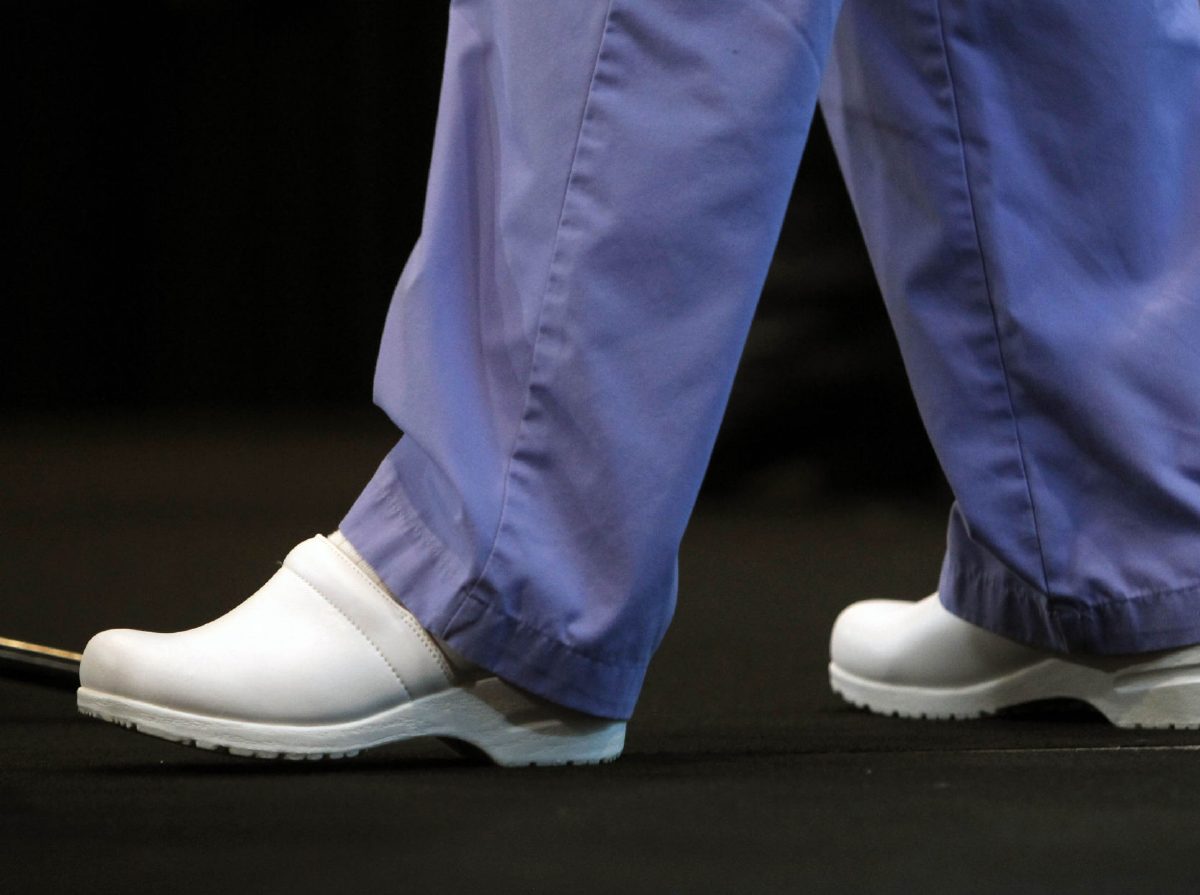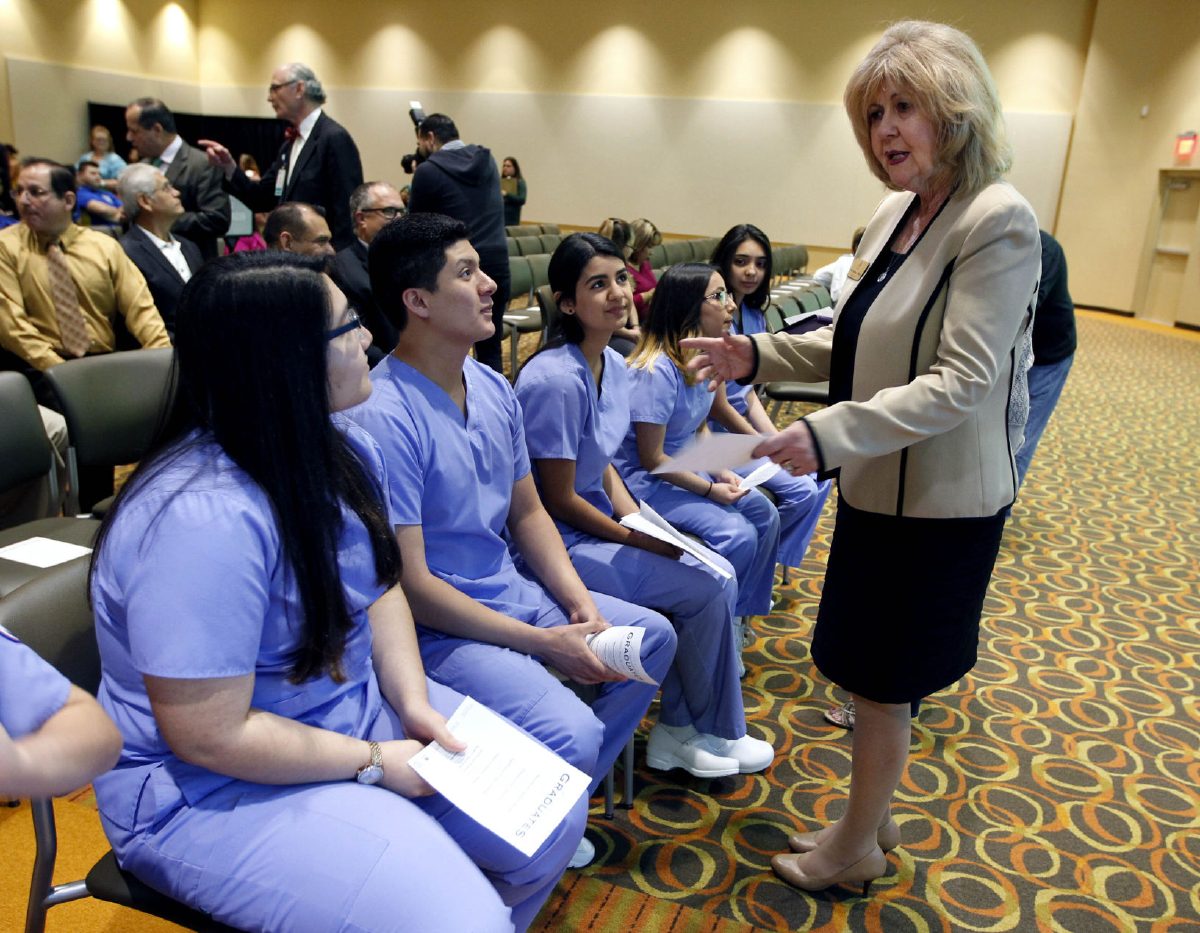EDINBURG — With their high school graduation scheduled for this weekend, eight Pharr-San Juan- Alamo school district students are the first in the nation to receive an associate degree in nursing before their high school diploma.
“All of the patient interaction and learning the course material, I thought it was very interesting, and it secured my belief that I want to do something in medicine,” said 18-year-old Iris Garcia, who was one of the eight to receive her associate degree and is moving on to the University of Texas at Austin to seek a degree in biochemistry. Her goal is to one day become a pediatric geneticist, which she said she learned about while in the program.
“I’ll focus more on children who are born with genetic disorders,” she explained. “I knew I didn’t want to do something normal. … I want to focus more on research because I know that that’s how I’m going to help not only my community, but the whole world.”
About two years ago the PSJA Independent School District partnered with South Texas College and Doctors Hospital at Renaissance to launch a program that would allow a small cohort of students to be the first to complete the associate degree in nursing along with their high school degree.
Garcia along with her seven classmates, were presented with DHR pins and welcomed to the hospital’s family during a ceremony Monday, where they also had the opportunity to announce their college picks. Like Garcia, all of the class members plan to continue their college education.
After much preparation and many meetings with the Texas Board of Nursing, the pilot program was approved and about 20 PSJA ISD students out of a cohort of 54 students who had been taking prerequisite courses were qualified to join. But the rigor of the curriculum and exposure to what it is to actually work in the field through practice in the hospitals, only eight achieved the final goal.
“There’s no model out there to emulate it,” said Jayson Valerio, dean of nursing and allied health at STC. “We have to maintain the standards and the academic rigor of the program. … We have to maintain the current admission and application progression in the (associate degree in nursing) program just like the other traditional nursing students.”
Valerio met with the board to answer questions about the program and said their main concern was about the maturity level of the students. But he was able to defend the intent of the program and said there are no studies proving that students are less mature or physically prepared to undertake the task.
“I got a lot of questions about their physical maturity and about their psychological maturity as well,” Valerio said. “When we measured their emotional intelligence, out of the 10 students, one was in the normal level, and nine of them scored higher than the normal level.”
The students undertook the same coursework as any other nursing student, but because the application guidelines specify that a high school degree was needed, the college needed to get approval to change it for this program.
Valerio is now getting ready to present the outcome of the initial cohort to the board in October, he said, and if it is approved, they will be able to continue offering the associate degree to high school students.
Part of the challenge is making sure the students are able to complete the requirements for the associate and high school degree, scheduling times for the classes and, in this case, aligning three institutions that oversaw the program.
PSJA ISD Superintendent Daniel King said it only made sense to expand dual enrollment programs that offer associate degrees to include high-demand and high-paying fields such as nursing.
“Any of the areas where here in the Valley we have high-skill, high-need jobs or there are industries or sectors that are either short or want to move here but they are saying the workers are not there, we can work together with EDCs, private sectors,” King said, adding public-private partnerships are the way to go in order to create these types of opportunities.
“These young students are halfway through their bachelor’s degree at no cost to their family and no debt,” he said. “So they are more likely to finish and finish young. And, more likely, not to stop there. These young people are not planning to stop at the bachelor’s degree at all.”
For Iris Garcia’s mother, Elizabeth Garcia, pushing her daughter to enroll in the program was a no-brainer, she said. From a young age Iris had expressed curiosity in the medical fields and she knew this program would open doors.
“I always tell her ‘Go out there and make a difference,’” Elizabeth Garcia said. “It is a big advantage knowing that she got this degree and it didn’t cost us anything. She gained a lot of knowledge, she got to meet a lot of people and she is going to be able to use this in her future.”








